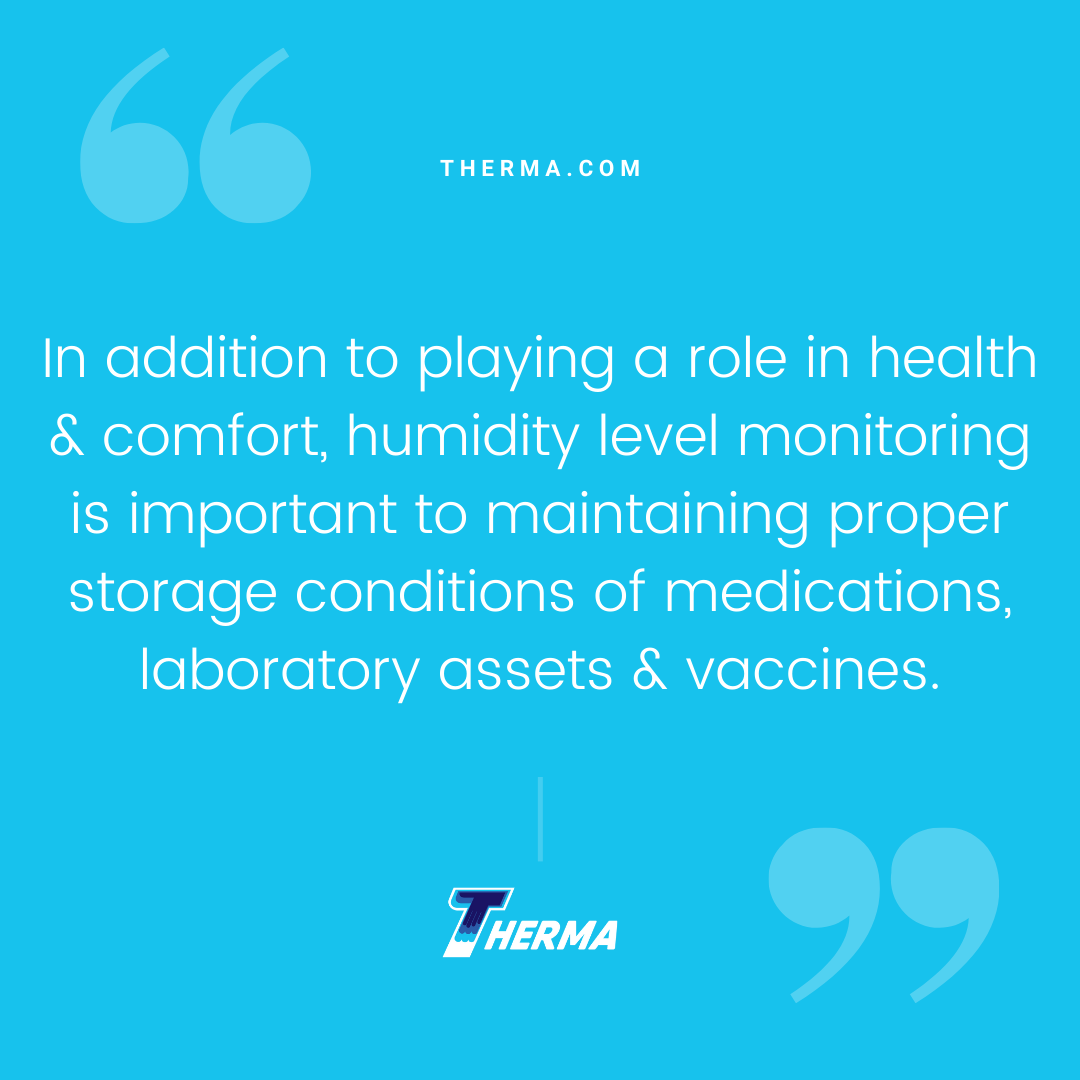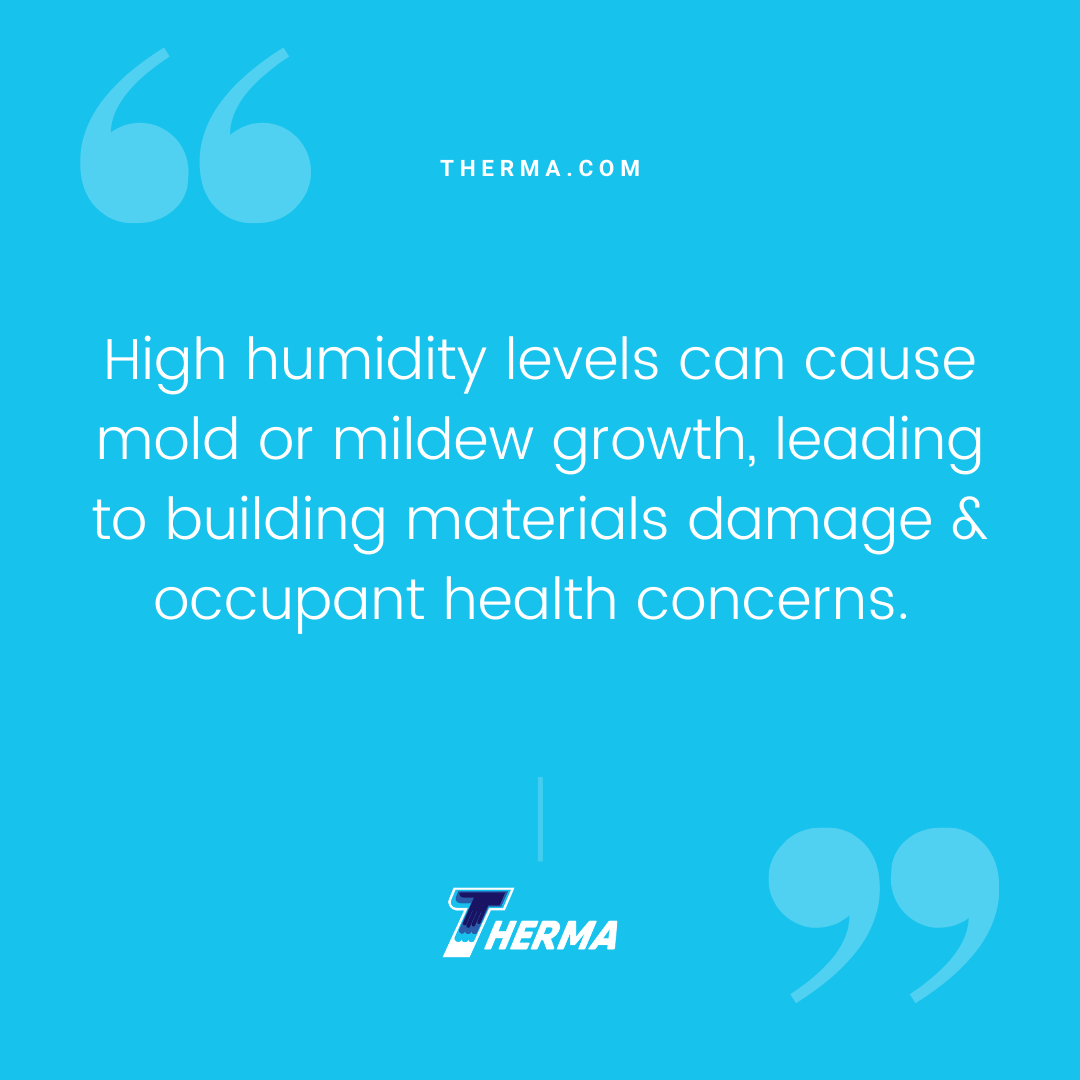by Ali Kriscenski
Whether large or small, all buildings depend on a set of fundamental principles that help protect materials, indoor air quality, and occupant comfort. Climate control plays a central role and, among the variables, indoor humidity levels are a top priority. Here’s a look at the issues related to indoor humidity and how you can keep them in check.
Importance of Indoor Humidity Control
As a building owner or manager, a focus on indoor humidity control can help operations and create opportunities for cost savings. High humidity levels can cause mold or mildew growth, leading to building materials damage and occupant health concerns. Interior humidity that is too low can cause respiratory issues, as well as increased spread of viruses and infections.
Humidity Control in Regulated Facilities
While humidity levels are important in all buildings, those housing healthcare or laboratories have additional regulations and standards for environmental conditions.
In healthcare facilities, proper climate control helps prevent the spread of contaminants and diseases. The COVID-19 pandemic demonstrated the importance of HVAC systems in facility operations. Pressurized rooms to prevent the spread of infectious disease, isolated air supply and return, and temperature and humidity monitoring all became central to patient care during the pandemic.
In addition to playing a role in health and comfort, humidity level monitoring is important to maintaining proper storage conditions of medications, laboratory assets and vaccines. The specific function of a designated area within a lab determines the conditions required. The U.S. Food and Drug Administration’s (FDA) guidelines set optimal temperature for labs between 68 F and 77 F with humidity levels between 30% and 50%.
Laboratories have specific facility management requirements that include environmental conditions, such as indoor humidity levels. Improper environmental conditions can cause contamination, bacteria, damage to equipment and decreased medication or vaccine efficacy.
Occupant Health
Indoor air quality (IAQ) is an important part of occupant well being and comfort. Studies on the benefits of green building demonstrate how IAQ affects occupant health, as well as employee absenteeism and productivity.
Humidity levels play a central role in providing good IAQ for occupants and visitors. Proper humidity and temperature can help stave off respiratory illnesses, such as asthma. When humidity levels allow mold to proliferate, occupants are at risk of chronic or severe respiratory and neurological health issues. Similarly, mildew can cause wheezing, congestion and headaches.
As a facility manager, it’s beneficial to focus on the health effects of indoor environments. Providing an indoor environment with good IAQ enhances occupant health, but also makes good business sense. IAQ strategies can prevent legal issues, and revenue loss to vacancies, as well as create higher quality tenant experience.
What Causes of Humidity In Buildings?
While buildings can be designed as controlled, conditioned environments, these can be affected by a variety of factors. When assessing the humidity levels in your building, keep in mind that ventilation, mechanical systems, building envelope, and occupant behavior all contribute to indoor environmental conditions.
Ventilation is an important factor in maintaining good indoor air quality. However, it is crucial to control the amount of outside air that enters the building. This is particularly important during ‘wet’ months where outside air may have increased humidity. Consider air entering the building, but also check for excessive exhaust that may be creating energy leaks and drawing unconditioned air into the building.

Mechanical systems should be properly sized and suitable to the building’s requirements. If your facility has undergone any fluctuations in occupancy levels or changes in programming, you may want to have an HVAC specialist survey your equipment to determine if it is the right size and type, in good condition or in need of repairs, and properly controlled.
The building envelope works in tandem with your mechanical HVAC system. If your humidity levels are out of range, take a look at the building’s envelope to identify areas where water may be finding its way inside. This includes doors, windows, roofing (including any roof penetrations, such as vents), basement foundation and attic spaces. Restoring the building’s envelope integrity will help manage the excess humidity.
Another contributor to humidity fluctuations is occupant behavior. When occupants open windows and doors or randomly adjust temperature settings, it can cause chaos to indoor environments and stress HVAC equipment. Knowing the behavior patterns of occupants can help you make adjustments that keep humidity and other factors under control.
What Is the Ideal Indoor Humidity?
The Environmental Protection Agency (EPA) recommends that indoor humidity should be between 30% to 50% for indoor comfort humidity control.
How To Improve Indoor Humidity Levels
There are several ways to improve indoor humidity. aking the steps below can help you determine the root cause of poor humidity levels and provide insight into small things you and your employees can do to improve indoor humidity.
Conduct a Survey
If your building is showing signs that indoor humidity levels are too high or low, you can start with a survey of its systems and occupancy patterns. This can help identify causes of humidity fluctuations and may reveal simple changes or repairs that can alleviate problems caused by humidity levels.
This survey should include an inspection of the building to check for leaks or other water issues. Check controls and settings to be sure they are working properly and set to create the desired conditions. You can enlist an HVAC contractor to inspect ductwork and make recommendations for system repairs or improvements, such as system integrated devices like ventilation dehumidification units.
Air Balancing Test
You can also ask your HVAC professional about air balancing to test your heating and cooling system. An HVAC technician can use diagnostic equipment to find any problems that may be the cause of uneven or insufficient airflow, or negative air pressure. This test can reveal blockages or damages that can be easily remedied to restore conditioned air humidity and temperature settings.
Upgrade Ventilation and Exterior Systems
A sure way to improve indoor humidity is to upgrade your air ventilation systems and replace old windows and doors that could be letting humidity to enter your building.

Change Occupant Behavior
Another important method to improve indoor humidity is to engage occupants in the process. Occupant behavior, such as opening windows or adjusting thermostats, can have huge impacts on a building’s IAQ. Educating tenants about how behaviors change system efficiencies is a cost-effective method to improve indoor air quality.
Managing Humidity at Your Facility
Knowing the causes of indoor humidity levels and having an understanding of its impact on buildings and occupants makes it possible to set a management strategy. Working with facilities personnel and enlisting an HVAC professional to provide industry insight will make it possible for you to identify any humidity issues and find cost-effective strategies to manage indoor environmental conditions.
Ali Kriscenski was trained in high-performance building design at Boston Architectural College. She has worked with leading architecture and construction firms in NYC and New England and served on the executive team at the Forest Stewardship Council International. She was the managing editor at Inhabitat and has worked pro bono for the Green Building Institute, ISEAL Alliance and Habitat for Humanity.
Sources
University of Córdoba – “A ventilation system proves effective at reducing hospital infections”
U.S. Food and Drug Administration (FDA) – Facilities and Environmental Conditions
Environmental Protection Agency (EPA) – Ventilation and Coronavirus (COVID-19)
Environmental Protection Agency (EPA) – Mold Course Chapter 2: Why and Where Mold Grows
FM Link – Green Building and Indoor Air Quality
Mayo Clinic – Humidifiers: Ease skin, breathing symptoms







